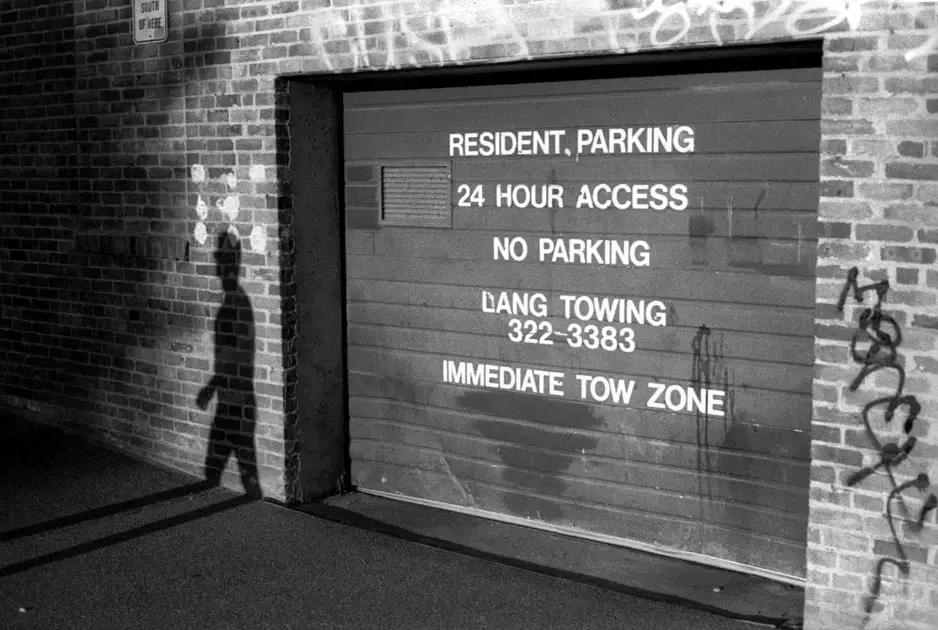Taking inspired action involves proactively acting on your intuition and insights to align your behaviors with your goals, leading to meaningful progress and personal growth.
Have you ever wondered how some people seem to effortlessly manifest their dreams? Manifestation is a powerful practice that can help you unlock the life you desire. In this guide, we’ll explore effective techniques to help you connect with the energy of the Universe and co-create your reality.
Jump to section
What is Manifestation?
Manifestation refers to the process of turning your thoughts and desires into reality through focused intention and belief. It’s about aligning your energy with what you want to attract into your life.
Understanding the basics
At its core, manifestation is based on the idea that our thoughts create our reality. When you focus on positive thoughts and visualize your goals, you send out energy that can attract those experiences into your life.
How does it work?
Many people believe that the Universe responds to our vibrations. By consistently holding a clear vision of what you want and feeling the emotions associated with achieving it, you can shift your vibrational frequency. This sets the stage for opportunities to arise that align with your desires.
Real-life example
For instance, let’s say you want to land your dream job. By visualizing it daily, creating a vision board, and feeling excited about this possibility, you start attracting opportunities and networking connections that get you closer to that job.
Data to consider: According to a study by the National Center for Biotechnology Information, visualization can enhance motivation, significantly improving performance outcomes in various tasks.
The Importance of Setting Intentions
Setting intentions is a crucial step in the manifestation process. It involves clearly defining what you want to attract in your life. This clarity helps align your thoughts and energy with your goals.
Why are intentions important?
Intentions act as a roadmap for your desires. When you set a specific intention, you create a mental picture of your goal, making it easier to focus your energy and attention.
How to set effective intentions
To set powerful intentions, consider these steps:
- Be specific: Instead of saying, “I want to be successful,” specify what success means to you.
- Use positive language: Frame your intentions in a positive light. For example, say, “I attract opportunities” instead of, “I don’t want to fail.”
- Visualize your intentions: Take time to imagine what achieving your intentions feels like. Feel the emotions associated with your success.
Real-life example
Many people report that setting clear intentions significantly impacts their success. For instance, a study by the American Psychological Association found that individuals who set specific goals are 10 times more likely to achieve them than those who set vague intentions.
How to Create a Vision Board

A vision board is a powerful tool for visualizing your goals and dreams. It helps to keep your aspirations front and center, making them more tangible.
Steps to create your vision board
Follow these steps to confidently create a vision board:
- Gather materials: You’ll need a board, magazines, scissors, glue, and markers. You can also include printed images or inspirational quotes.
- Set your intentions: Take a moment to think about what you want to achieve this year. Focus on specific goals like career aspirations, health, or personal growth.
- Find images and quotes: Look through magazines or online resources for visuals that resonate with your goals. These should evoke positive feelings and motivation.
- Arrange your board: Start placing your images and quotes on the board. There’s no right or wrong layout; choose a design that feels good to you.
- Display your vision board: Put your board somewhere you’ll see it daily, like your bedroom or home office. This keeps your goals in mind and reinforces your intentions.
Why do vision boards work?
Studies show that visualizing your goals can significantly increase your odds of achieving them. According to a 2015 study in the Journal of Applied Psychology, individuals who visualize their goals regularly have a 20% higher success rate.
The Power of Visualization
Visualization is a powerful technique that can help you achieve your goals. It involves creating clear mental images of your desired outcomes. This practice can boost your motivation and focus.
How does visualization work?
When you visualize your goals, your brain begins to treat those images as real experiences. It activates the same neural pathways as if you were actually doing it. This helps reinforce your intentions and fosters a sense of belief in your abilities.
Steps to effectively visualize
To harness the power of visualization, follow these steps:
- Find a quiet space: Choose a comfortable and quiet environment to focus on your visualization.
- Close your eyes: Take deep breaths and relax your mind and body.
- Imagine your goal: Create a vivid mental picture of what you want to achieve. Include as many details as possible — sights, sounds, and feelings.
- Feel the emotions: Experience the emotions associated with achieving your goal. This makes the visualization more impactful.
- Practice regularly: Spend a few minutes each day visualizing your goals to strengthen the practice.
The impact of visualization
Research from the Psychological Bulletin shows that visualization can significantly increase performance in various areas. Athletes who practice visualization often see improved results in their performance, proving that mental imagery can translate into real-world success.
Daily Manifestation Techniques
Daily manifestation techniques can help you align your thoughts and actions with your goals. Consistent practice reinforces your intention and aids in attracting what you desire.
Practical techniques to try
Incorporate these simple practices into your daily routine:
- Gratitude journaling: Every morning, write down three things you’re grateful for. This shifts your focus to abundance and positivity.
- Affirmations: Repeat positive affirmations daily. Phrases like “I am capable of achieving my dreams” can help empower your mindset.
- Visualizations: Spend a few minutes each day visualizing your goals. Imagine them as if they’ve already come true, feeling the emotions connected to those achievements.
- Mindfulness meditation: Set aside time to meditate. Focus on your breath and become aware of your thoughts, helping you remain present and aligned with your desires.
- Acts of kindness: Engage in small acts of kindness daily. This creates positive energy and enhances your sense of connection, supporting the manifestation of love and good vibes.
Research backing these practices
According to a study published by the Harvard Business Review, individuals who practice gratitude and visualization are more likely to achieve their personal and professional goals. Regularly implementing these techniques can lead to increased motivation and fulfillment.
Letter from Your Future Self

Writing a letter from your future self can be a powerful manifestation tool. It helps you connect with your goals and visualize your desired outcome.
How to create your letter
Follow these steps to help craft a meaningful letter:
- Choose a specific date: Pick a future date when you envision yourself having achieved your goals. This could be one year, five years, or a decade from now.
- Begin with a warm greeting: Address yourself, using language that feels personal and loving. For example, “Dear [Your Name],”
- Describe your achievements: Write about what you’ve accomplished. Be detailed and include how you feel about your successes.
- Share your struggles: Mention challenges you faced along the way and how you overcame them. This allows you to see the journey realistically.
- Offer advice: Give your past self encouragement and reminders of your strengths. Share insights you’ve gained through your experiences.
- End with optimism: Close your letter with a positive affirmation about your future. Remind yourself that you are capable of achieving great things.
The impact of this exercise
A study published in the Journal of Experimental Psychology found that visualizing your future self can significantly enhance motivation and lead to more effective goal-setting. Seeing your successes in writing makes them feel more attainable.
Building a Gratitude Mindset
Building a gratitude mindset is essential for improving overall well-being. Practicing gratitude helps shift your focus from what’s lacking to what you have.
Steps to cultivate gratitude
Here’s how you can start developing a gratitude mindset:
- Keep a gratitude journal: Write down three things you’re grateful for each day. This daily practice reinforces positive thinking.
- Reflect on positive experiences: Take a moment to remember and savor good moments from your day, no matter how small.
- Express your gratitude: Tell people you appreciate them. A simple thank you can strengthen relationships and create positive feelings.
- Practice mindfulness: Being present in the moment helps you notice things to be grateful for. Meditation techniques can enhance this awareness.
- Gratitude visualization: Spend time visualizing the people and things you’re grateful for, feeling the associated emotions. This strengthens your gratitude practice.
Research on gratitude benefits
Studies show that maintaining a gratitude mindset can lead to improved mental health. The Greater Good Science Center found that individuals who regularly practice gratitude report lower levels of depression and increased happiness.
Taking Inspired Action
Taking inspired action is key to successfully manifesting your goals. It involves acting on your intuition and insights that align with your desires.
How to take inspired action
Follow these steps to activate your inspired actions:
- Listen to your intuition: Pay attention to your gut feelings. When you feel drawn to an opportunity, it’s often a sign to take action.
- Set clear goals: Define what you want to achieve. This clarity makes it easier to recognize relevant actions as they arise.
- Break tasks into smaller steps: Large goals can be overwhelming. Divide them into manageable tasks to make taking action feel easier.
- Stay open to new opportunities: Be flexible and open-minded. Sometimes, unexpected paths can lead to fulfilling outcomes.
- Reflect on your progress: Regularly evaluate your actions and their outcomes. This helps you adjust your approach as needed.
Real-life examples of inspired action
For instance, many successful entrepreneurs claim that acting on a strong feeling or intuition led them to pivotal opportunities. Research from Harvard University highlights that individuals who act on inspired insights report higher overall satisfaction and achievement rates.
Wrapping up
Taking inspired action is essential to manifesting your dreams. It’s all about listening to your intuition and acting on those feelings. Remember, breaking your goals into smaller steps can make the journey more manageable.
Life is full of unexpected paths, and being open to them can lead to wonderful opportunities. Reflecting on your progress helps you stay aligned with what you truly want.
As you step forward on your journey, think about one small action you can take today. It can make all the difference in nurturing your dreams. Be kind to yourself as you explore what feels right!
FAQ — your questions about taking inspired action answered
What does it mean to take inspired action?
Taking inspired action involves acting on your intuition and feelings that align with your goals.
How can I tell if an action is inspired?
You’ll likely feel excited or motivated about the action, and it aligns with your personal desires.
Can I take small steps towards my goals?
Absolutely! Breaking your goals into smaller, manageable steps can make taking action feel less overwhelming.
Should I reflect on my progress regularly?
Yes, reflecting helps you stay aligned with your intentions and adjust your path if needed.
Is it okay to change my goals mid-way?
Definitely! It’s normal for goals to evolve as you gain new insights and experiences.
How do I stay motivated when taking action?
Creating a supportive environment and celebrating small wins can help maintain your motivation.






